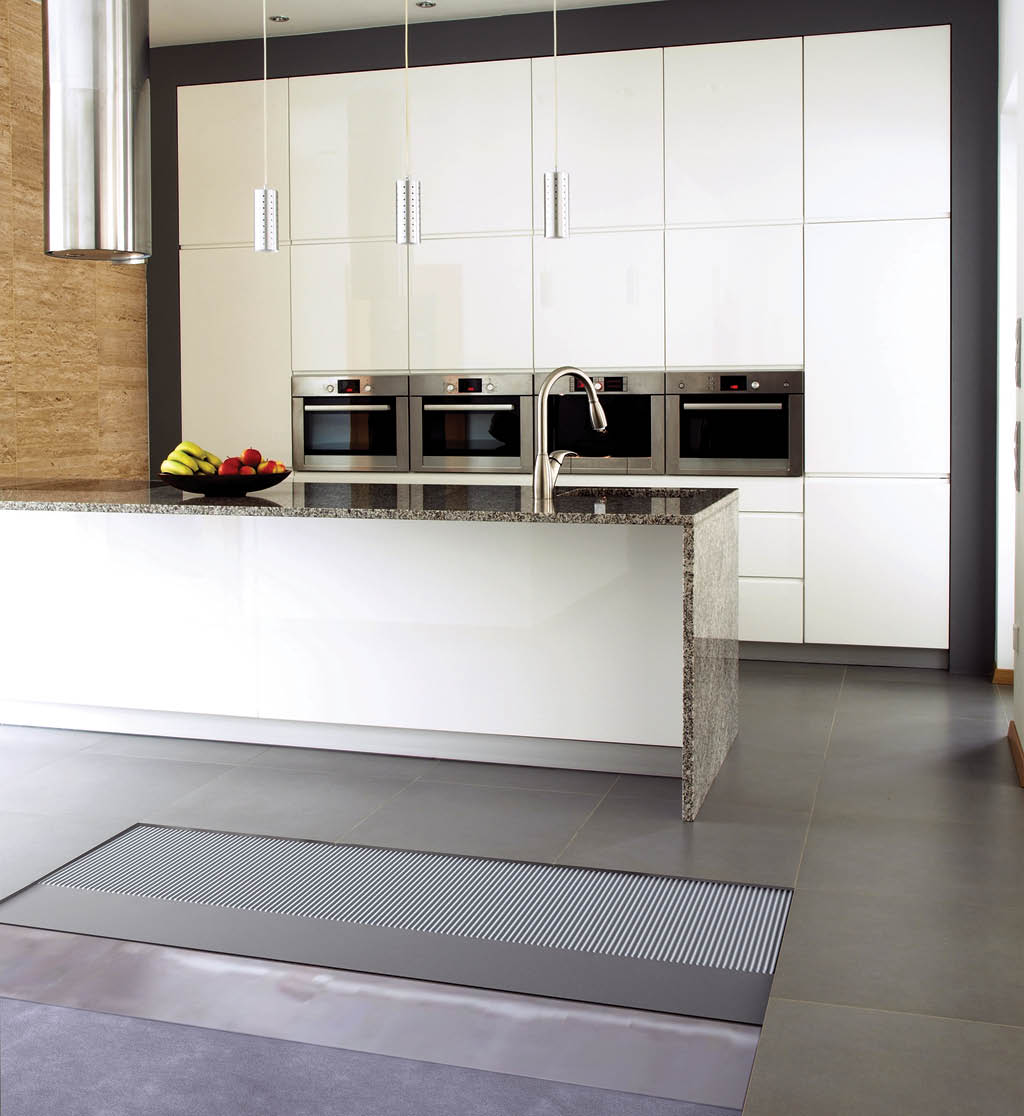From Realtà Mapei n° 37 - 2023-11-09

As tile manufacturing technologies have advanced, so have the sizes of tiles being produced and sold. We are not that far away from a time where a 12" x 12" (30 x 30 cm) tile was considered “large-format.” The most common shapes and sizes of tile on the market are now 12" x 24" (30 x 61 cm) rectangular tiles and plank-shaped tiles that are often 6" (15 cm) wide and 36" to 48" (91 to 122 cm) in length. If you think this is a dramatic change, consider that there are 5' x 10' (1.5 x 3 m) porcelain panels being produced and installed every day around the world. This shows how far the industry has advanced in a short period of time.
A tile is considered large-format if it has one side greater than 15" (38 cm) in length. This distinction creates several significant changes in the requirements for the substrate preparation and installation of these tiles. ANSI standards for substrate flatness for smaller tiles are 1/4" (6 mm) maximum variation over 10' (3 m) and 1/8" (3 mm) over 2' (0.6 m). For a large-format tile, the ANSI standards call for 1/8" (3 mm) maximum variation over 10' (3 m) and 1/16" (1.5 mm) over 2' (0.6 m). This means that you need to pay special attention to the flatness of your substrate and make sure you prepare it accordingly. MAPEI has a full suite of surface-preparation products that can help you achieve a flat substrate.
You also need to pay attention to the tile mortar you select, especially if you are installing a large-format tile. Large-and heavy-tile mortars, or LHT mortars, were once referred to as medium-bed mortars. These are thin-set bonding mortars for ceramic and stone tile, which have been formulated to minimize slump and facilitate a thicker bond coat. These thicker bond coats, which should not exceed 1/2" (12 mm) after the tile is embedded, are helpful in achieving the required mortar coverage. Tiles are allowed to have some warpage, which means they are not completely flat, so this is another reason why the thicker bed is useful as tiles get larger. Another concern is slump, which can occur if the mortar is not designed for thicker beds and heavier tiles. This can manifest as a sunken corner or edge of a tile, creating unsightly lippage and even a trip hazard. New additions to the ANSI standards help identify mortars that are appropriate for large-and heavy-tile installations with an “H” designation.
Pressure-sensitive adhesives have gained tremendous popularity over the past 5 to 10 years. The continued growth of the market for luxury vinyl tile (LVT) and luxury vinyl plank (LVP) has been a big part of this movement. Pressure-sensitive applications, or “dry to the touch” adhesive applications, have become more popular because they allow for an easier and efficient mode of installation. The dry adhesive lets the installer work on top of the vinyl plank or tile during the installation and work from the middle of the room to the edges. Because of the long open times, or the amount of time the adhesive remains “tacky” or “sticky,” installers can spread large areas and then install these large areas with great efficiency. Because the adhesive is dry and tacky, the installation gains strength from increased traffic that pushes the flooring down onto the adhesive.
For all the advantages of pressure-sensitive applications, there is one significant disadvantage: The strength of a pressure-sensitive bond is less than that of a wet or semi-wet adhesive application. When LVT or LVP is laid into a wet adhesive and allowed to dry properly, the resulting bond is significantly stronger. This is important because of the inherent dimensional instability of some products on the market. Even if a vinyl plank or tile meets the industry standard for dimensional stability (ASTM F2199), the amount of dimensional movement allowed can still result in significant visual concerns. The thermal contraction of vinyl tile or planks can result in end gapping and the thermal expansion can result in end peaking.
It is imperative that you review the finished flooring manufacturer’s installation instructions and their recommended method of installation. If the finished flooring manufacturer recommends that you set their product into a wet adhesive, then you should follow those application instructions with MAPEI adhesives. This is significant because laying into a wet adhesive changes the acceptable substrate moisture levels as well as substrate porosity requirements, and the process for laying into a wet adhesive is completely different than a dry adhesive.
The general trend in the past decade has been a movement towards the idea that most modular resilient products can be installed in a pressure-sensitive method, but recent trends are the opposite. MAPEI has a full suite of resilient flooring adhesives that can be used in wet, semi-wet and pressure-sensitive applications. The most important takeaway is to be certain that you know how your LVT or LVP is recommended to be installed and not just assume you know.

Toll-free within Canada:
Technical Services at 1-800-361-9309
Customer Service at 1-800-668-1212
Copyright © 2025 MAPEI Inc. All rights reserved.
2900, avenue Francis-Hughes, Laval (Québec) H7L 3J5